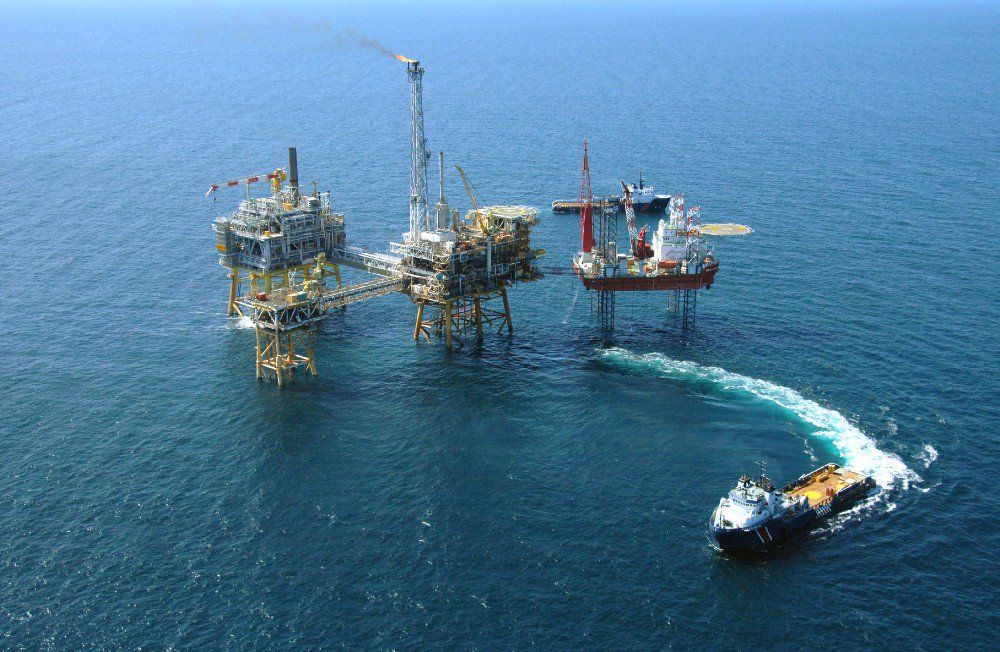The Sable Offshore Energy Project involved the production of natural gas and condensate from five offshore fields located approximately 225 kilometres off the east coast of Nova Scotia, near Sable Island National Park Reserve.
Fun Facts
Canada’s first offshore natural gas project.
Began production December 1999.
Produced a total of 60 billion cubic metres or 2.1 trillion cubic feet of natural gas from five offshore fields.
Permanent Production Shutdown December 2018.
Status: Decommissioned and Abandoned
The Sable Offshore Energy Project has been permanently decommissioned and abandoned.
History
The Sable Offshore Energy Project is operated by ExxonMobil Canada Ltd., with its partners Shell Canada Limited, Imperial Oil Resources Limited, Pengrowth Energy Corporation (acquired by Cona Resources in 2020) and Mosbacher Operating Ltd. The Sable Offshore Energy Project produced from five offshore gas fields, beginning in December 1999. The fields are: Thebaud, Venture, South Venture, North Triumph, Alma and South Venture.
The Development Plan Application for the Sable Offshore Energy Project estimated there were 85 billion cubic metres (3 trillion cubic feet) of recoverable gas reserves and 11.9 million cubic metres (75 million barrels) of condensate that would be produced over the lifecycle of the project, which was estimated to be approximately 25 years. The production facilities were designed for a production volume of 14.4 million cubic metres per day of raw gas (505 million standard cubic feet per day), yielding 13 million cubic metres per day (460 million standard cubic feet per day) of sales gas.
The Fields
The fields at the Sable Offshore Energy Project were developed in two tiers. Tier I fields are Thebaud, Venture and North Triumph. Thebaud began production on December 31, 1999, followed by Venture and North Triumph in February 2000. Tier II fields are Alma and South Venture. Alma began production in November 2003, followed by South Venture in December 2004. A total of 21 development wells were drilled in the five fields.
Operations
Central facilities were installed at Thebaud for production, compression, utilities and accommodation. Satellite platforms were located at Venture, North Triumph, Alma and South Venture. These were unmanned wellhead platforms. The central Thebaud facility had systems for remote monitoring and control of the other platforms. Each of the unmanned platforms was equipped with a helideck and emergency accommodations. Hydrocarbons produced at the satellite platforms were transported through a system of subsea flowlines to the Thebaud platform for processing and export to shore.
Raw gas from the five fields was separated and dehydrated at the Thebaud platform. The separated gas and hydrocarbon liquids and condensates were then recombined and transported through a subsea pipeline to landfall in the Country Harbour area of Guysborough County, Nova Scotia, and then to a gas processing plant at nearby Goldboro, Nova Scotia. There, the gas was conditioned by removing natural gas liquids, condensates and remaining water. The sales gas then flowed to markets in eastern Canada and the northeastern United States through an onshore pipeline. Natural gas liquids and condensate were transported by another onshore pipeline to a fractionation plant at Point Tupper, Nova Scotia for further processing before being sold.
Total gas production from each of the five Sable Offshore Energy Project fields appears in the table below.
|
Field Name
|
Total Production - E9M3
(Billions of cubic metres) |
Total Production - Bcf
(Billions of cubic feet) |
|---|---|---|
|
Thebaud
|
14.2
|
501
|
|
Venture
|
14.0
|
494
|
|
North Triumph
|
8.3
|
292
|
|
South Venture
|
8.9
|
315
|
|
Alma
|
14.6
|
516
|
|
Total Production
|
60.0
|
2,118
|
Decommissioning and Abandonment
In late 2017, ExxonMobil began the plugging and abandonment of the 21 Sable Offshore Energy Project production wells, starting with those wells located in the Thebaud field. This process involved the use of the Noble Regina Allen, a jack-up drilling rig, to set a series of mechanical and/or cement plugs in the wellbore to permanently seal each well in accordance with the regulations. This is to prevent hydrocarbons from migrating within or out of the well.
ExxonMobil shut down all production from the remaining Sable Offshore Energy Project producing fields (South Venture and Alma) in December 2018. The plugging and abandonment of all the wells was completed in December 2019. Activities for the decommissioning and removal of the offshore platforms located at each of the five offshore fields fully began in 2019. The heavy lift vessel, the Heerema Marine Contractors Thialf, began facilities removals work in the field in May 2020, and all facilities were removed and the project was fully abandoned and decommissioned by November 2020.
A post-abandonment monitoring program was conducted in the late summer/fall of 2021 to re-confirm the integrity of the well plugging and abandonment program, and to confirm that there is nothing on the seabed that could pose a potential hazard to other commercial ocean users. On September 18, 2021, a number of small bubbles of methane gas were observed to be intermittently released from the former Alma 2 well location. ExxonMobil then began additional monitoring of the Alma 2 well to further investigate the well condition. Six additional Alma 2 monitoring campaigns took place – three in 2022 and three in 2023. The monitoring programs showed that the intermittent release rates remained low and exhibited a decreasing trend, with zero bubbles of methane observed during the last September 2023 program. After assessing all of the data compiled (remotely operated vehicle videos and associated logs, gas sample analyses, third-party commissioned reports), the CNSOPB was satisfied that the post-abandonment monitoring requirements were met and concluded that future monitoring is not required. The Operations Authorization for the Sable Offshore Energy Project was revoked and the project officially closed.
![]() Please note that some information related to this project may be archived. For more information, please contact us at info@cnsopb.ns.ca.
Please note that some information related to this project may be archived. For more information, please contact us at info@cnsopb.ns.ca.
